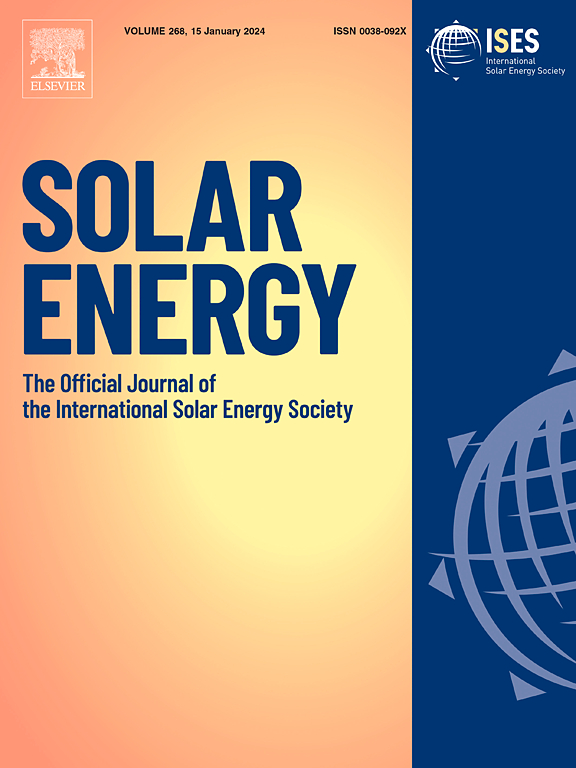Modelling wave-induced losses for floating photovoltaics: Impact of design parameters and environmental conditions
IF 6
2区 工程技术
Q2 ENERGY & FUELS
引用次数: 0
Abstract
The interest in floating photovoltaics (FPV) as a land-sparing alternative has been rapidly growing over the last few years. So far, most of the installed FPV systems are inland on relatively calm waters. However, with the expanding market, FPV is moving to nearshore and offshore locations. There, larger waves can be expected resulting in a need for evaluating the impact of wave motion on the performance of FPV systems. Wave-induced movements of the PV panels can lead to varying irradiance levels, also within the string of panels, causing wave-induced loss (WIL). In this work, we have developed a model to simulate WIL for FPV systems. The model consists of three main modelling steps, wave-structure-interaction modelling, irradiance modelling and electrical modelling, where the second step has been experimentally verified. In the model, the in-house software 3DFloat is used to simulate the movement of the PV panels, and existing python libraries are used for the irradiance and electrical modelling. With this method, WIL has been simulated for different scenarios, to study the influence of different locations, sea states, times of year, string lengths, tilt angles and wave directions. The simulated WIL varied greatly with the chosen conditions. As an example, the WIL ranged from 3.3% for a significant wave height of 0.25 m to 6.7% for a significant wave height of 1 m.
浮动光伏的波浪损耗建模:设计参数和环境条件的影响
在过去的几年里,人们对浮动光伏发电(FPV)作为一种节约土地的替代方案的兴趣迅速增长。到目前为止,大多数安装的FPV系统都位于相对平静的内陆水域。然而,随着市场的扩大,FPV正在向近岸和海上地区转移。在那里,可能会出现更大的波浪,因此需要评估波浪运动对FPV系统性能的影响。光伏板的波动引起的运动可以导致不同的辐照度水平,也在面板串内,造成波动引起的损失(WIL)。在这项工作中,我们开发了一个模型来模拟FPV系统的WIL。该模型包括三个主要的建模步骤:波-结构-相互作用建模、辐照度建模和电建模,其中第二步已得到实验验证。在模型中,使用内部软件3DFloat来模拟PV板的运动,并使用现有的python库进行辐照度和电气建模。利用该方法,对不同场景下的WIL进行了模拟,研究了不同位置、海况、季节、管柱长度、倾斜角度和波浪方向对WIL的影响。模拟的WIL随所选条件的不同变化很大。举例来说,当显著波高为0.25米时,WIL为3.3%,而当显著波高为1米时,WIL为6.7%。
本文章由计算机程序翻译,如有差异,请以英文原文为准。
求助全文
约1分钟内获得全文
求助全文
来源期刊

Solar Energy
工程技术-能源与燃料
CiteScore
13.90
自引率
9.00%
发文量
0
审稿时长
47 days
期刊介绍:
Solar Energy welcomes manuscripts presenting information not previously published in journals on any aspect of solar energy research, development, application, measurement or policy. The term "solar energy" in this context includes the indirect uses such as wind energy and biomass
 求助内容:
求助内容: 应助结果提醒方式:
应助结果提醒方式:


